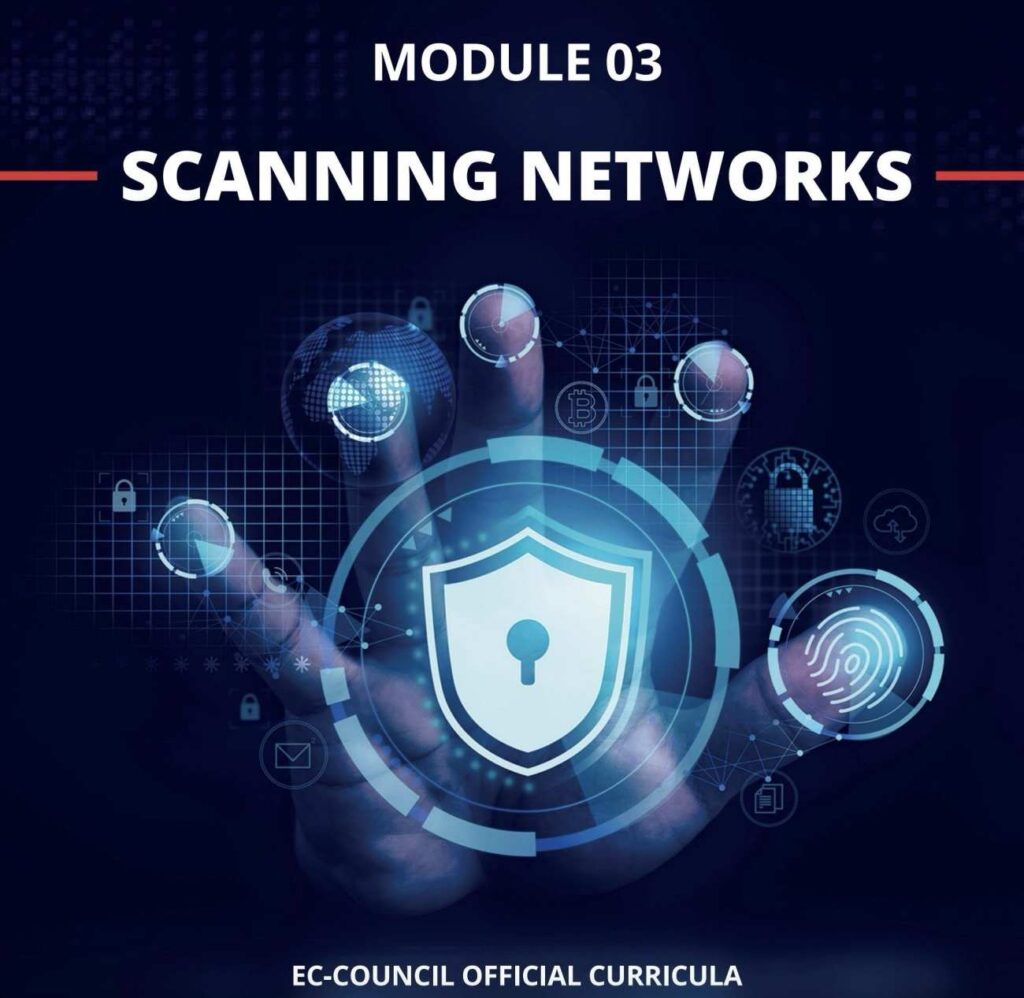CEH v12 Module 03: Scanning Networks covers the process used by attackers to discover and gather information about a computer network.
Countermeasures are strategies or security measures employed to protect a network from unauthorized scanning and potential attacks. Here’s an overview of some network scanning techniques and countermeasures:
Network Scanning Techniques:
- Ping Sweeps:
- Technique: Sending ICMP Echo Request (ping) messages to a range of IP addresses to determine which hosts are live.
- Countermeasure: Disable ICMP responses, and use firewalls to block ICMP traffic.
- Port Scanning:
- Technique: Scanning for open ports on a target system to identify services and potential vulnerabilities.
- Countermeasure: Regularly update and patch systems, use intrusion detection/prevention systems, implement firewalls, and limit unnecessary services.
- TCP SYN Scanning:
- Technique: Sending TCP SYN packets to see how the target responds, identifying open ports.
- Countermeasure: Implementing intrusion detection/prevention systems, using stateful firewalls, and rate-limiting connections.
- UDP Scanning:
- Technique: Sending UDP packets to identify open ports on a target system.
- Countermeasure: Disable unnecessary UDP services, use firewalls to block unwanted UDP traffic.
- OS Fingerprinting:
- Technique: Analyzing the network responses to determine the operating system and software versions in use.
- Countermeasure: Implementing host-based firewalls, disabling unnecessary services, and keeping systems up to date.
- ICMP Scanning:
- Technique: Using ICMP packets to gather information about hosts on a network.
- Countermeasure: Filtering ICMP traffic, disabling unnecessary ICMP responses.
Countermeasures:
- Firewalls:
- Employing firewalls to filter and control incoming and outgoing network traffic based on an organization’s previously established security policies.
- Intrusion Detection/Prevention Systems (IDS/IPS):
- Deploying IDS/IPS to monitor network and/or system activities for malicious activities or security policy violations.
- Regular Patching and Updates:
- Ensuring that operating systems, applications, and network devices are regularly updated with the latest security patches to address vulnerabilities.
- Access Control Lists (ACLs):
- Using ACLs to restrict network access and control the flow of traffic based on predefined rules.
- Network Segmentation:
- Dividing a network into segments or zones to limit the potential impact of a security breach and to contain malicious activities.
- Honeypots:
- Deploying honeypots, which are decoy systems designed to attract attackers and gather information about their tactics and techniques.
- Encryption:
- Using encryption to protect sensitive data during transmission, makes it more difficult for attackers to intercept and analyze.
- Security Policies and Training:
- Establishing and enforcing security policies, as well as providing regular security awareness training for employees reduce the likelihood of successful attacks.
Implementing a combination of these network scanning countermeasures can significantly enhance the security posture of an organization’s network.








